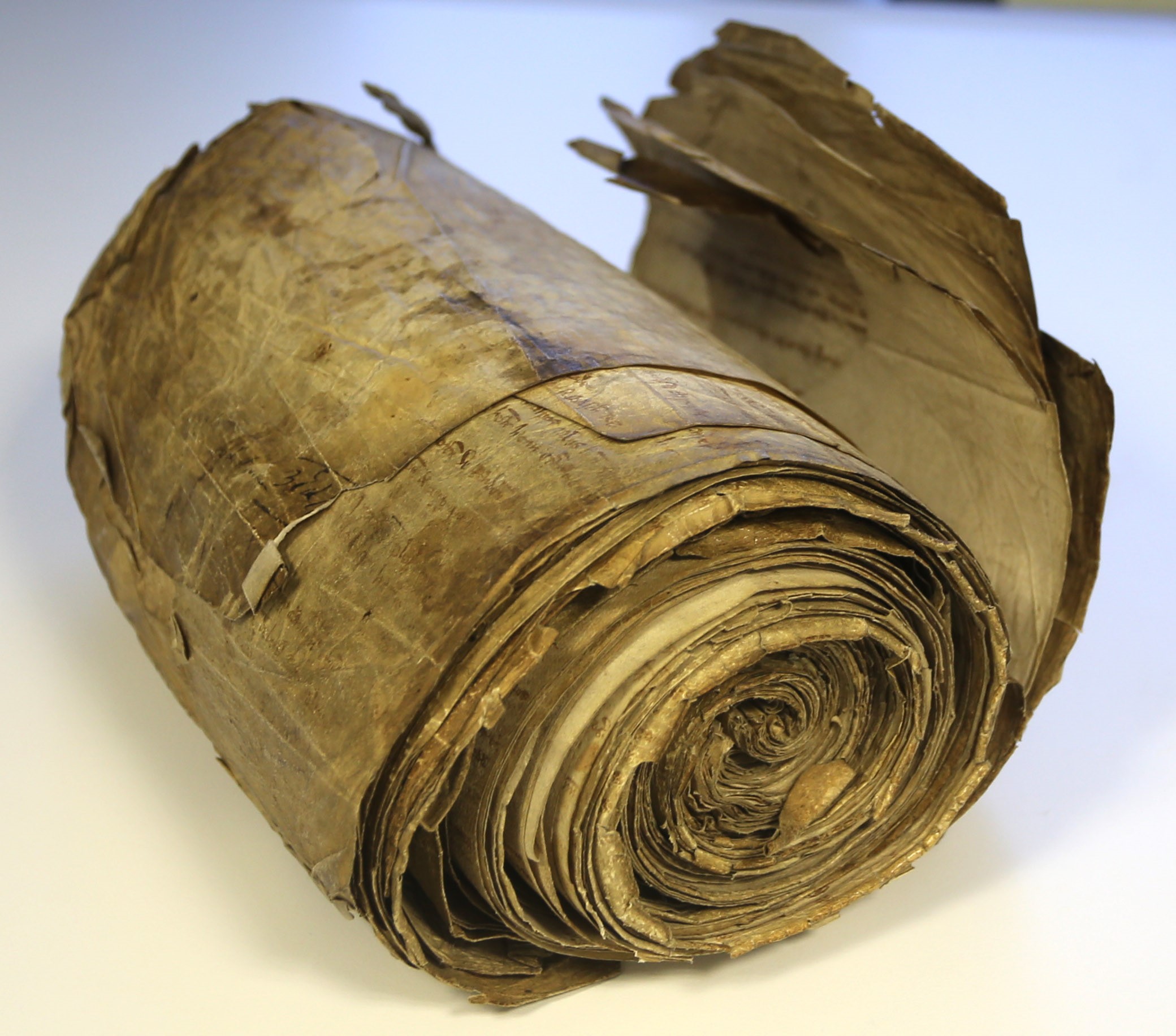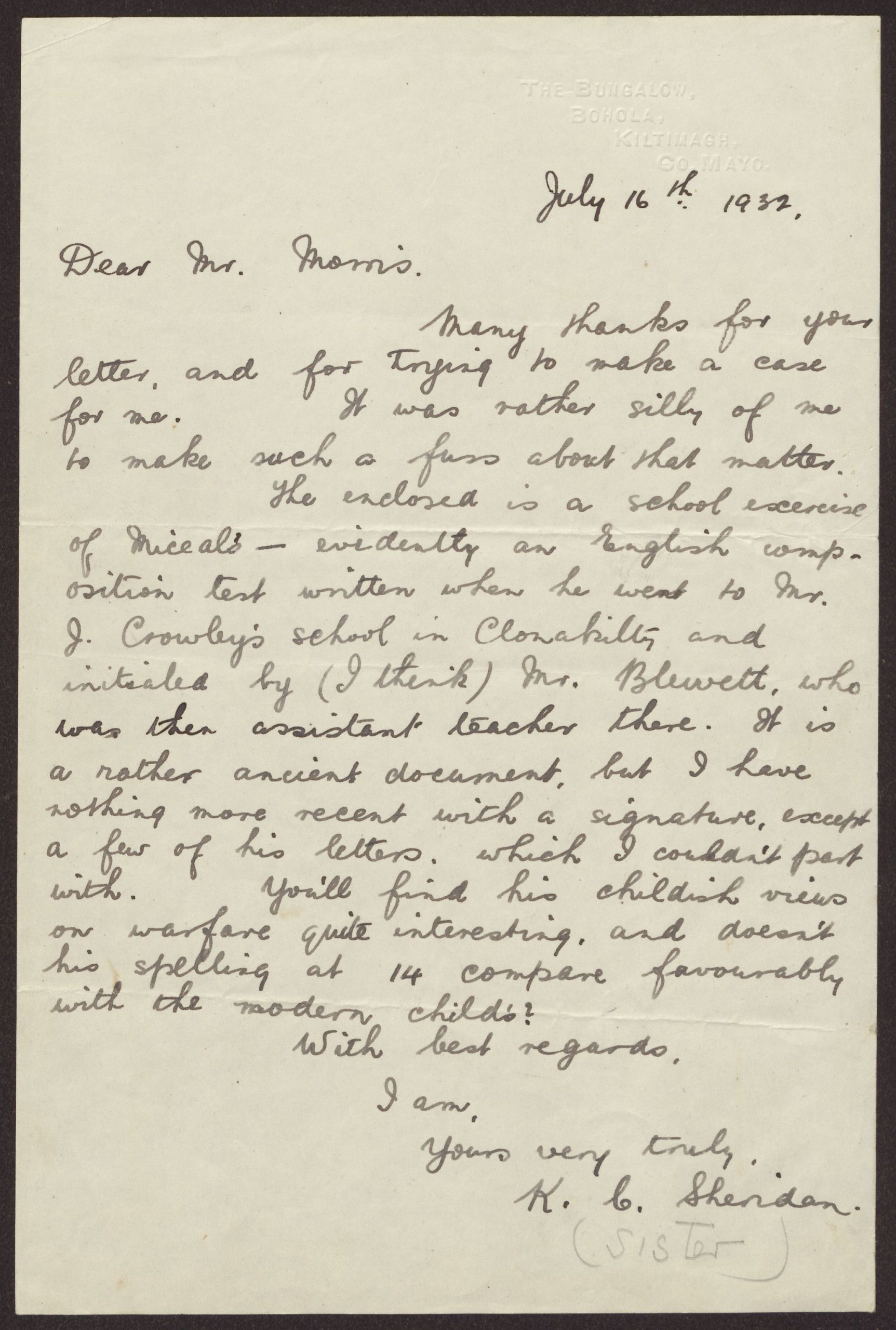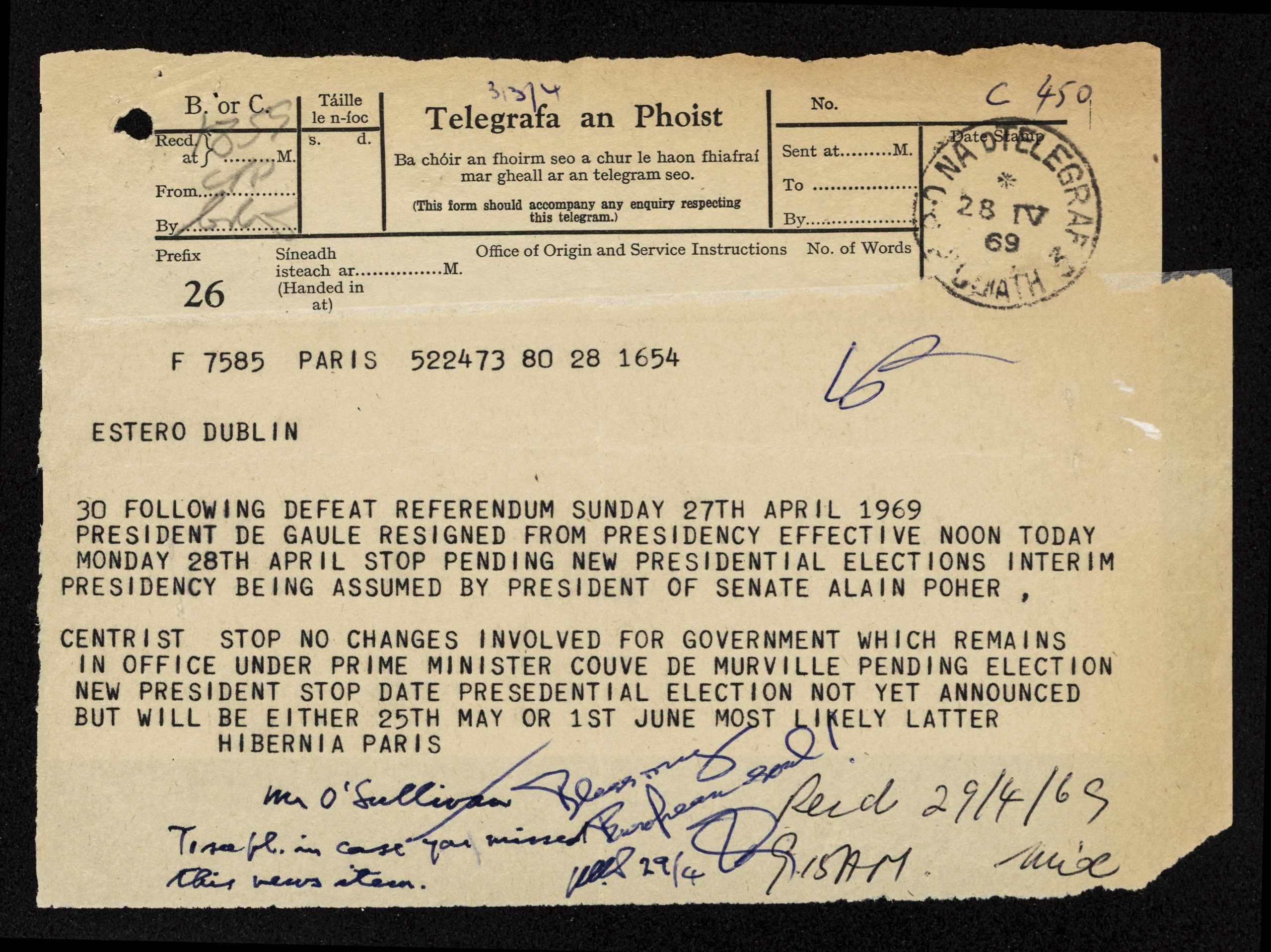Files in focus: ‘Medieval Memorandum Rolls’ by Dr Elizabeth Biggs

Two Original Memoranda Roll: NAI EX 1/1 and 1/2
Among the most extensive of the medieval collections that were added to the shelves of the new record treasury of the Public Record Office of Ireland (PROI) in the 1860s were the memoranda rolls, large records documenting some of the most important processes in the medieval exchequer of Ireland. A total of 147 of these parchment records from the thirteenth to the fifteenth centuries were in the PROI in June 1922. Just two survived the fire on 30 June; one from 1309-10 and one from 1319-20.
The memoranda rolls were the ‘working memory’ of the exchequer, the government department which was responsible for finance in the lordship of Ireland. The exchequer had been the first main institution of English government to be introduced to Ireland around 1200. In order to track the monies claimed by the English king and the coin paid out by the officials of the exchequer, the clerks compiled four types of records. The memoranda rolls recorded things that the clerks thought would be needed again as they went through the slow, meticulous process of auditing the accounts of royal officials – orders to pay people, notes about partial payments, records of how much money was owed by each major town and county in taxes, transcripts of relevant records and more. They also recorded the names of the people summoned to answer in the Exchequer court – a court of law where financial matters might be heard. The range of material is what makes the memoranda rolls as a type of record so exciting for medieval historians, and what makes the two surviving rolls now in NAI so precious.
In among the excitement of the Virtual Treasury launch at the end of June 2022, I was lucky enough to be able to spend a day looking at these rolls. The Medieval ‘Gold Seam’ team on the project have been focussing on other collections from the medieval exchequer because there is a significant set of original rolls created as part of the audit process of the treasurers of medieval Ireland and now held in The National Archives (UK) in London, but we always knew that the memoranda rolls would be worth coming back to and assessing properly. I’m looking forward to getting to work with them in the future, but for now, I’ve had a chance to start sussing out how they work and what they might be able to tell us in the future if they can be made available and interlinked with all the other surviving records and copies of material from the PROI.
The first thing I notice is the shape of the rolls. Because Zoë Reid, Keeper (Public Services and Collections), has recently conserved the two rolls at NAI, we can now see them as the medieval clerks saw them – as unbound working sheets of parchment (these are called membranes) before they were bound together at the end of the year. Of course, the clerks didn’t keep them as beautifully and as carefully as NAI does now! There was no climate-controlled and protective storage then. We can now see the notes at the top of each membrane telling the clerks what was on it, which for centuries were hidden in the stitching. These were how they kept track of what needed to go where on the roll and made sure that they were in the right order when they were finally bound together. You can also see the three holes that were used to stitch the membranes together at the top into a roll using leather thread. The end-result would have been rather like a giant and very thick flipchart.
When you start reading the various individual items that the clerks copied onto the rolls, you start thinking about what else was going on in Ireland at the time. In 1319-20, for example, there’s lots about how the Scottish invaders in 1315 have damaged Dublin and its surrounding areas. The mayor of Dublin is asking for help and for the city’s taxes to be lowered as a result. We can also see the resurgence of Gaelic Irish power in the west and north, where Connacht and Kerry, at least partly shired in the thirteenth century, just are not communicating with the English government based in Dublin. Similarly, Ulster has had no seneschal (chief governor for the liberty of Earl Richard de Burgh) ‘since the coming of the Scots’. The English government is scrambling and it is reflected in what the clerks note in this roll.
It was such a pleasure to sit in the NAI reading room and carefully read and examine the parchment membranes. I’ve previously only encountered them through the work of others and there’s nothing like working with the originals and seeing how the layers of meaning were built up over time. These were working documents and frequently officials went back and added material to the rolls. They might add the decisions made about a court case or they might note that a debt had been fully paid off at a later date and so cross-reference to the other roll. Space was left for this type of addition, but even so, the additions are sometimes crammed in tightly. You also get frustrating entries where there’s no follow-up for whatever reason, just when you want to know more of the story. I wanted to know more about Helen Fattyng in 1309-10 who sued in the exchequer for a debt owed to her. Was she repaid? Did she get to put her case to the justices in the exchequer? I’ll keep hunting for more about her and her case. Maybe someone out there has stumbled on her name elsewhere and we can bring the puzzle pieces together.
If you want to get a flavour of the memoranda rolls yourself, David Craig’s transcription of and commentary on the 1309-10 roll is hugely useful and now available online as part of Trinity’s collection of PhD theses. James Lydon surveyed the surviving copies of the memoranda rolls and explained their format for Analecta Hibernica, now available on the Virtual Treasury. Philomena Connolly searched through the records now in TNA and listed the Irish material on the English memoranda rolls. These all serve as really useful guides to these rolls and their place within the medieval Irish exchequer.
Dr Elizabeth Biggs FRHistS
Medieval Exchequer Gold Seam Research Fellow (TNA)
Virtual Record Treasury, Ireland
Twitter: @elizabethcbiggs


